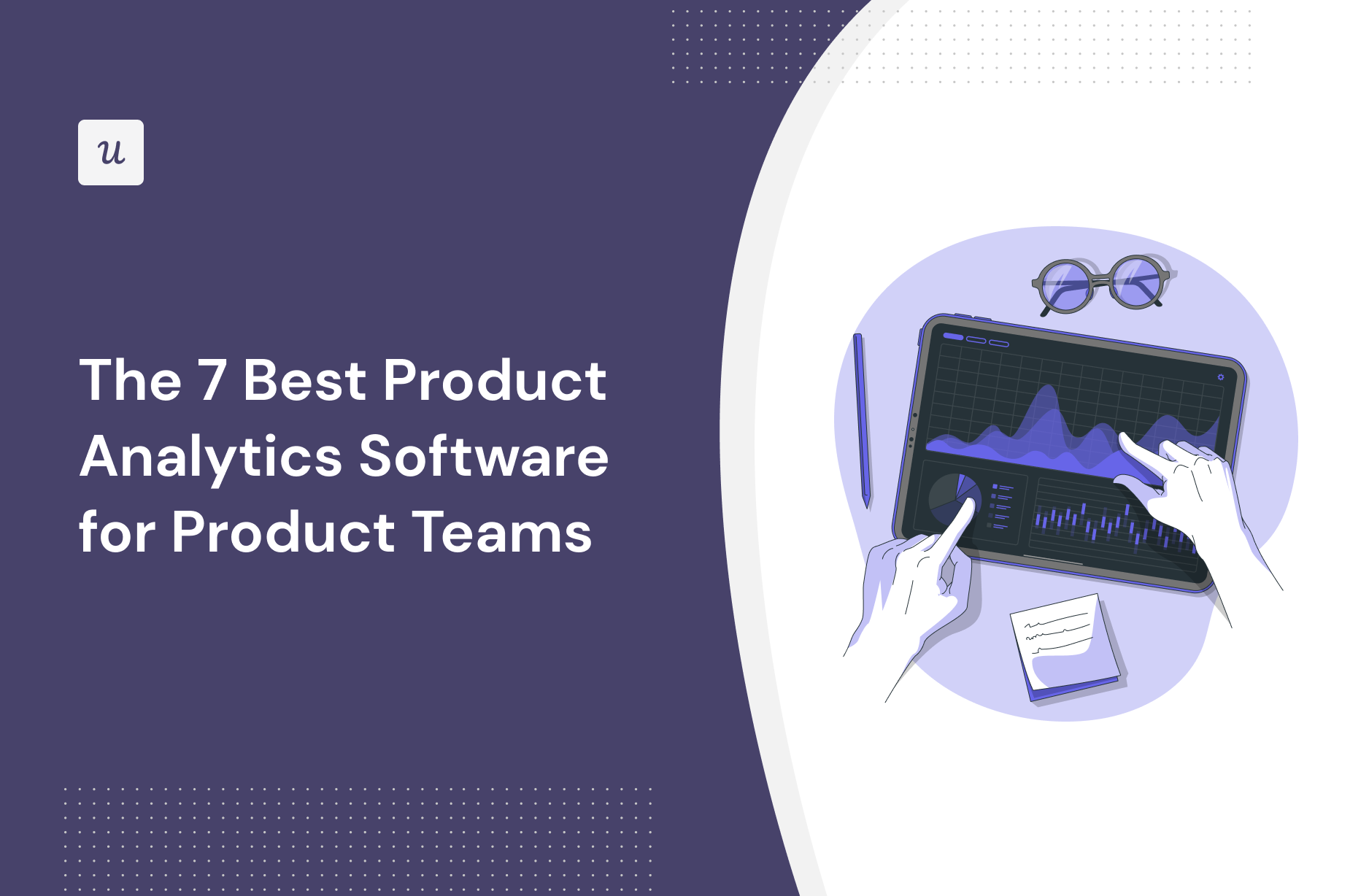
Product managers take product feedback seriously, but can customers always identify their issues correctly?
Product analytics allow you to track and analyze user activity and understand what users actually do rather than what users say they do. These analytics are fueled by behavior-based data that you can use to gain actionable insights.
In this article, we’ll go over the basics of product analytics, along with the best collection of product analytics software to serve your product needs.
Get The Insights!
The fastest way to learn about Product Growth, Management & Trends.
Overview of product analytics software
- Product analytics is the process of collecting, inspecting, and analyzing data generated from user interactions with your product.
- There are three levels of product analytics for SaaS businesses that can be summed up by answering three questions – “What”, “Who”, and “Why.”
- Are product analytics and product analytics tools important? The answer is a big yes! With such insights at your disposal, you can improve customer retention and satisfaction.
- Heap is a product analytics tool that lets you track both quantitative and qualitative data through its event tracking and session recording features.
- Amplitude analytics offers advanced features like automated report generation, instant visualizations, and event recommendations.
- With a generous free plan, Mixpanel allows real-time data tracking along with a plethora of other analytics features.
- Google Analytics is a free solution that product managers can use to track funnel conversions, create attribution reports, and more.
- FullStory is another tool that facilitates the analysis of both quantitative and qualitative data. One unique feature it offers is to track rage clicks in-app.
- Hotjar is the most popular tool for monitoring heatmaps and session recordings. It also offers survey functionality.
- The best product analytics platform is Userpilot with funnel analysis, event tracking, heatmaps, trend analysis, and a long list of other features. The best thing about Userpilot is that you can act on the product usage and user behavior insights through its engagement feature. Book a demo to learn more.
What is product analytics?
Product analytics is the process of collecting, inspecting, and analyzing data generated from user interactions with your product. The interactions can range from navigation to feature usage frequency.
Such user activity data can help you understand the value users are receiving from your product and identify issues that require your attention.
For SaaS business, there are three levels of product analytics that you need to consider, which can be summed up by answering three questions – “What”, “Who”, and “Why”.
These follow a top-down approach focusing on the following questions related to your product:
- What is happening?
- Who is doing it?
- Why are they doing it?
Breaking down the overall scope of product analytics into these 3 types of questions allows you to get a better sense of what kind of analytics software you’ll need.
Why is product analytics important?
The primary goal of product analytics is to help you understand customer behavior. Contrarily, surveys and interviews are prone to human error and bias since they rely on a lot of self-reporting. This can cause product managers to derive inaccurate conclusions, which can prove to be costly.
Product analytics, on the other hand, generates insights directly from usage and user behavior data.
McKinsey’s CMO survey found that more than 85% of companies reporting extensive use of customer analytics claimed to achieve a significant value contribution from it.
This includes outperforming their competitors on key performance metrics, including profit, sales, sales growth, or return on investment (ROI). Moreover, companies using customer analytics comprehensively report outperforming their competition in terms of profit almost twice as often as companies that do not.
This shouldn’t come as a surprise.
Using product analytics, you can identify where users stand in their journey and how users interact in-app. You can then segment them and track customer health scores based on that segmentation. Most importantly, you can identify disengaged users and craft a re-engagement strategy to bring them back.
You can better understand the significance of using product analytics when you consider that most people won’t continue doing business with a company that they’ve had a bad experience with.
When it comes to SaaS, this becomes even more impactful as the majority of user interactions occur through the product.
So, understanding your users not only helps you boost customer retention rates but also encourages referrals, helping you expand your customer base.
Who uses product analytics?
It’s a no-brainer that product managers are the ones who can find the most value from product analytics. It helps them understand their users better and make more informed decisions.
But the value of product analytics isn’t limited to product management. Engineers, marketers, and designers can also use this information to work more efficiently.
For instance, product analytics can prove to be valuable for engineers while debugging and improving features.
On the flip side, marketers can track the impact of their campaigns and use the insights from product analytics to create appropriate segments of target groups.
Moreover, designers can use product analytics to identify bottlenecks and streamline the user experience to make the product more appealing to users.
In a nutshell, product and marketing teams along with other key departments have tons to gain from using product analytics platforms.
The best product analytics tools for product teams
So which is the best product analytics tool that will help you understand user behavior and optimize conversion rates between important stages of the customer journey? Let’s have a look at the 7 best tools in the market.
Product analytics software #1- Userpilot
Userpilot is a product growth platform that drives user activation, feature adoption, and expansion revenue. It also helps product teams collect user feedback, streamline onboarding, and gather actionable insights from analytics.
As a digital analytics platform, Userpilot lets you look at granular product analytics, such as which features have the highest adoption rates, and big-picture insights like trend reports. Here are Userpilot’s top product analytics features:
- Feature tagging: Userpilot’s click-to-track feature tagger lets you view how many times a feature has been used and by how many users to measure its adoption. Users on the Starter plan can add up to 15 feature tags while those on the Growth or Enterprise tier can create unlimited tags.
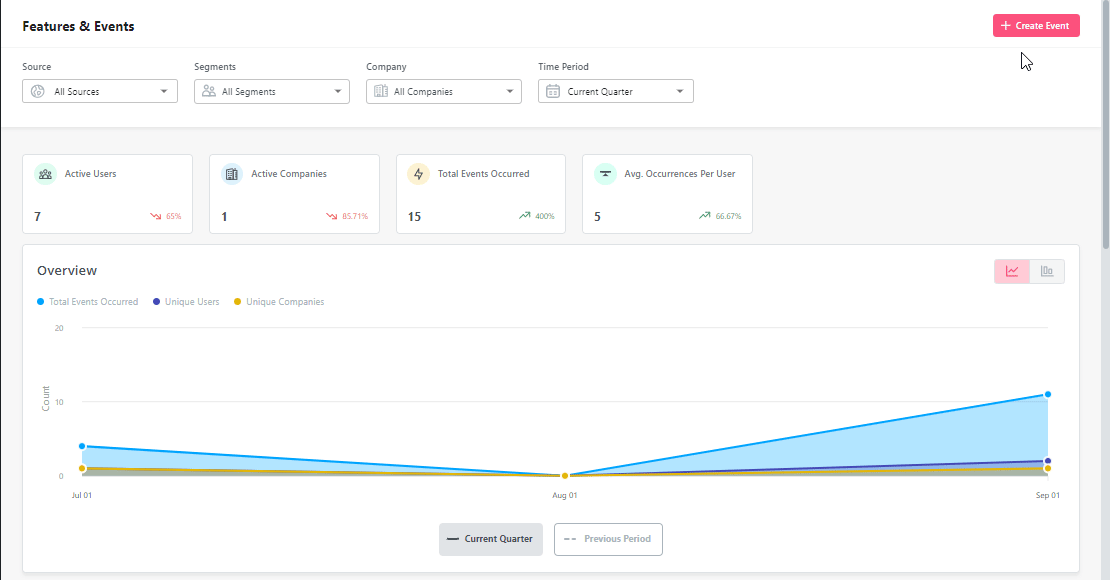
- Trends and funnels: Userpilot’s trends and funnels report lets you extract actionable insights from big data. You’ll be able to see which stage of an onboarding/conversion funnel most users drop out on and create trend reports with detailed breakdowns by user or time period.

- Saved reports: The saved reports analytics dashboard shows you all the reports you’ve created and lets you filter, export, or delete any reports in a single click. In addition to adding filters or sorting by report type, you can also edit or duplicate reports to help you review analytics.

- Analytics integrations: Userpilot integrates with some of the most popular analytics tools like Amplitude, Mixpanel, Segment, Google Analytics, and more. This makes it possible to sync product analytics both ways between the tools in your tech stack (two-way integration is only available for HubSpot at the time of writing, more to come).
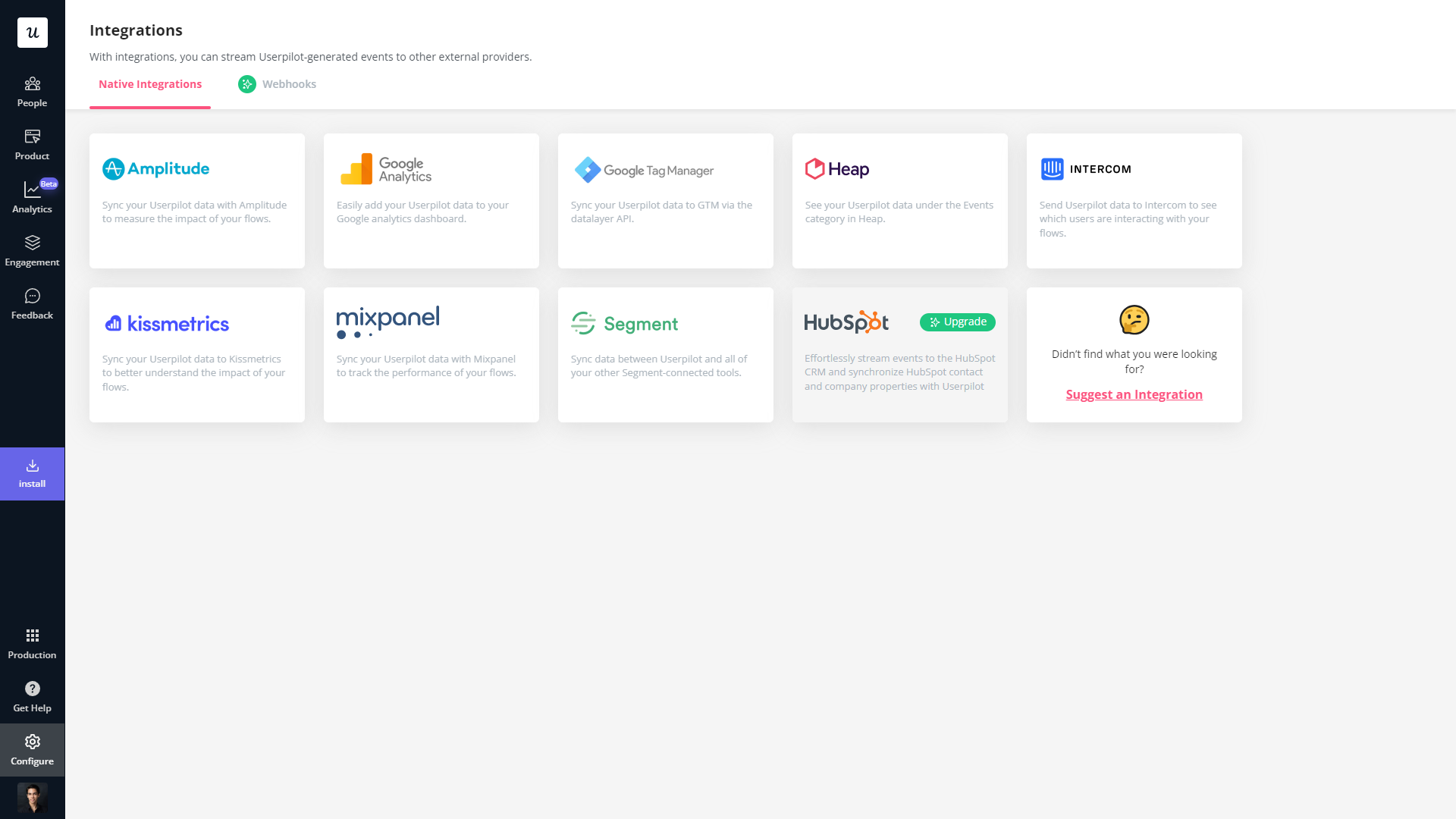
The cherry on top is Userpilot’s transparent pricing. It ranges from $299/monthly on the entry-level end to an Enterprise tier for larger companies. You don’t get better value for money than this!
Product analytics software #2 – Heap
As a cutting-edge product analytics tool, Heap is packed with features that help you monitor product usage, activation, and adoption. Insights from Heap can help you identify points of friction in user journeys and optimize the user experience to drive product growth.
Here’s how Heap facilitates seamless product analytics:
- Once you install Heap’s code snippet into your product, it automatically starts tracking user actions. You can access this raw data on your Heap dashboard and label the most relevant events.
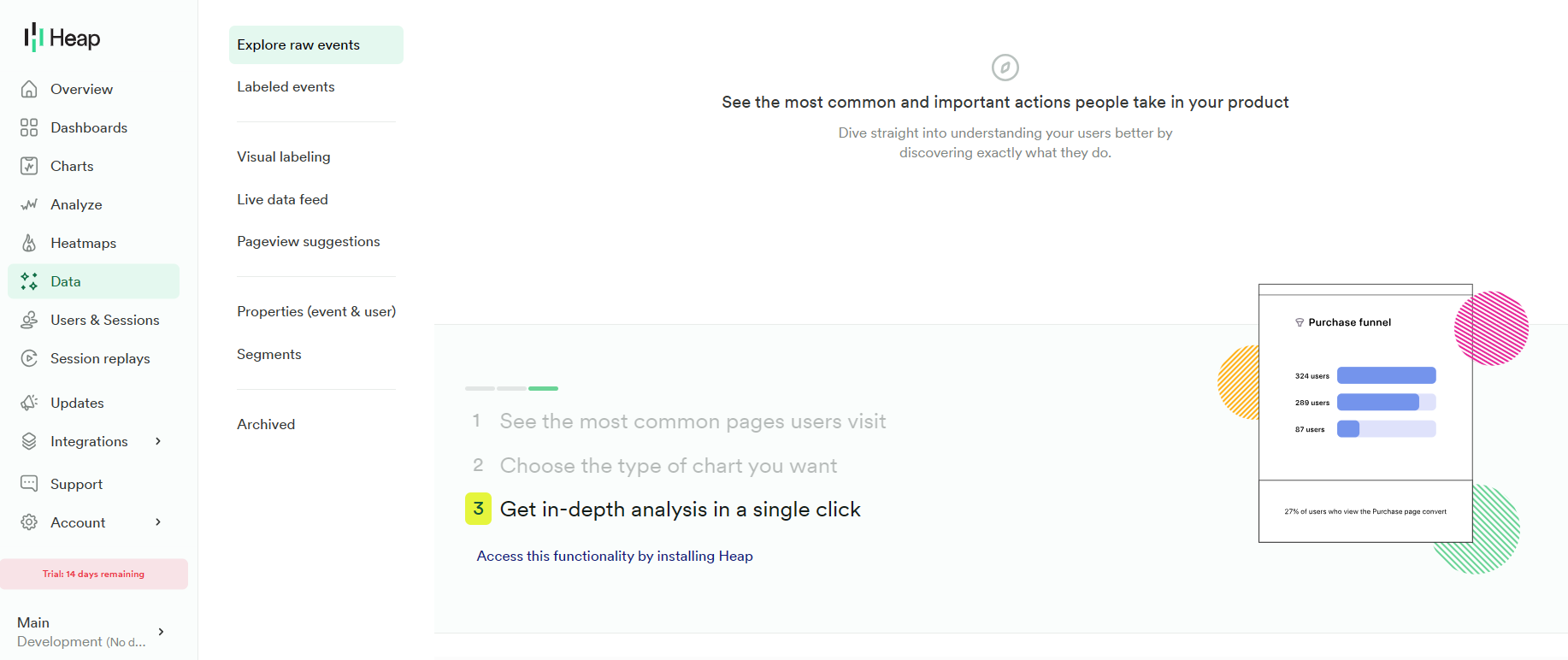
- You can use the Live data feed for a glimpse of how users move through your product in real time. This makes it easier to identify and eliminate roadblocks.
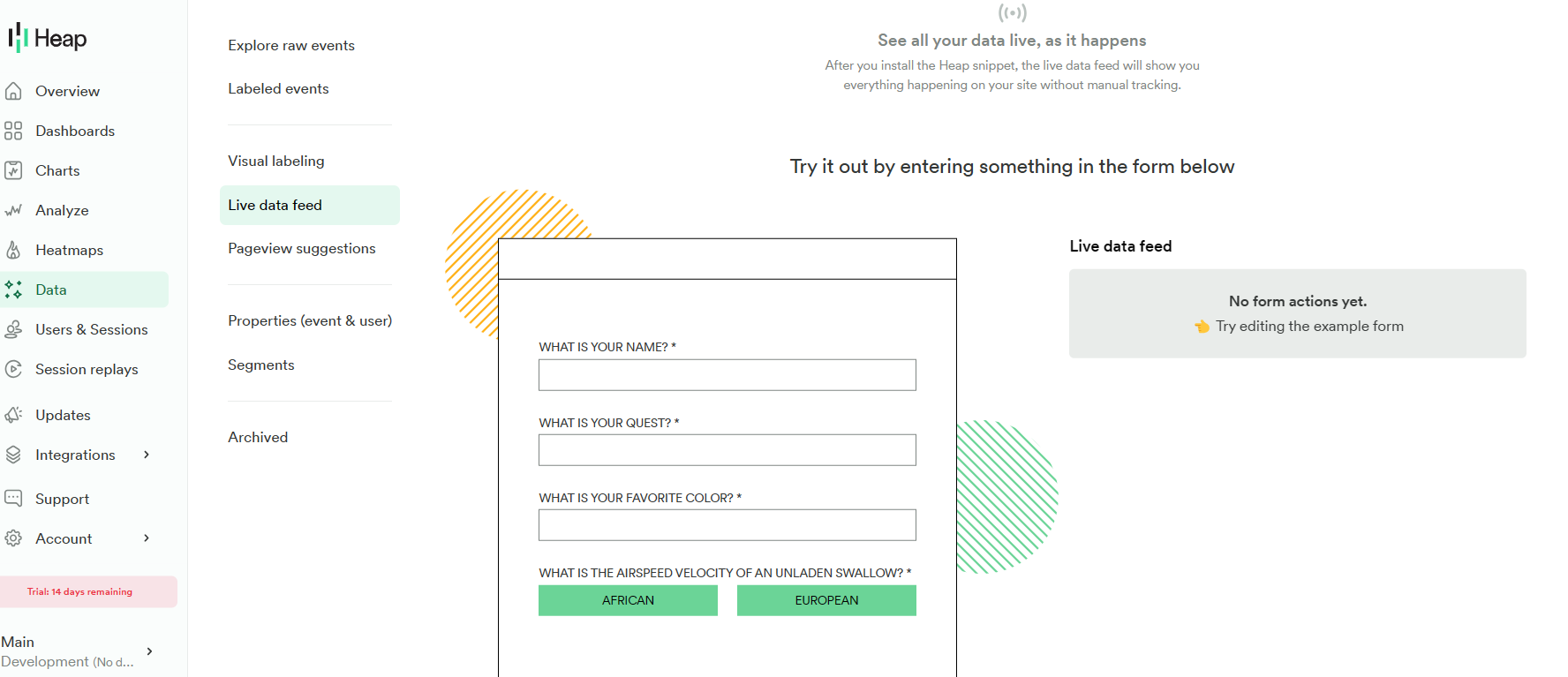
- You can use Session Replays to monitor the exact journey a user takes within your product. It’ll help you identify points where they struggle to complete an action or leave without taking the desired action.
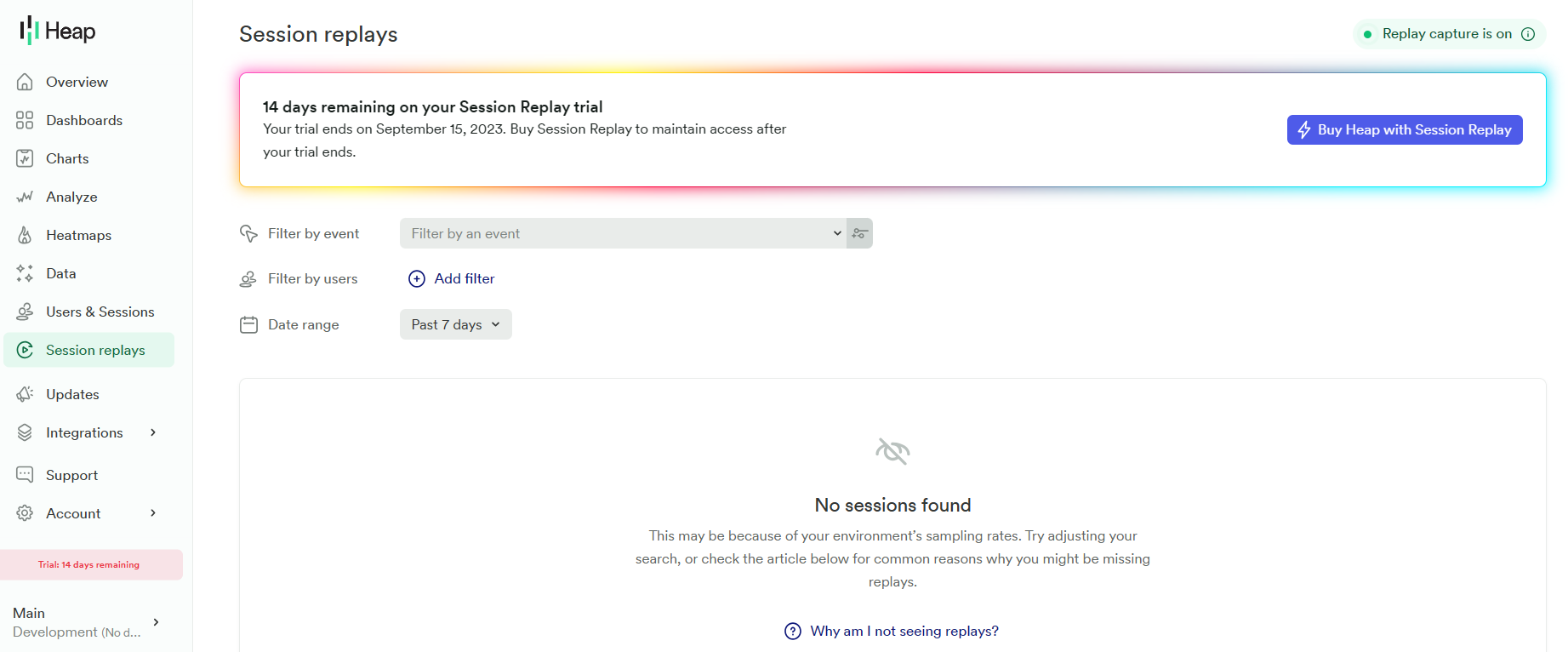
- Head to the “Usage over time” chart in the Analyze section for an overview of different events, user behavior, and conversion rates. Heap provides numerous filters for these events too.
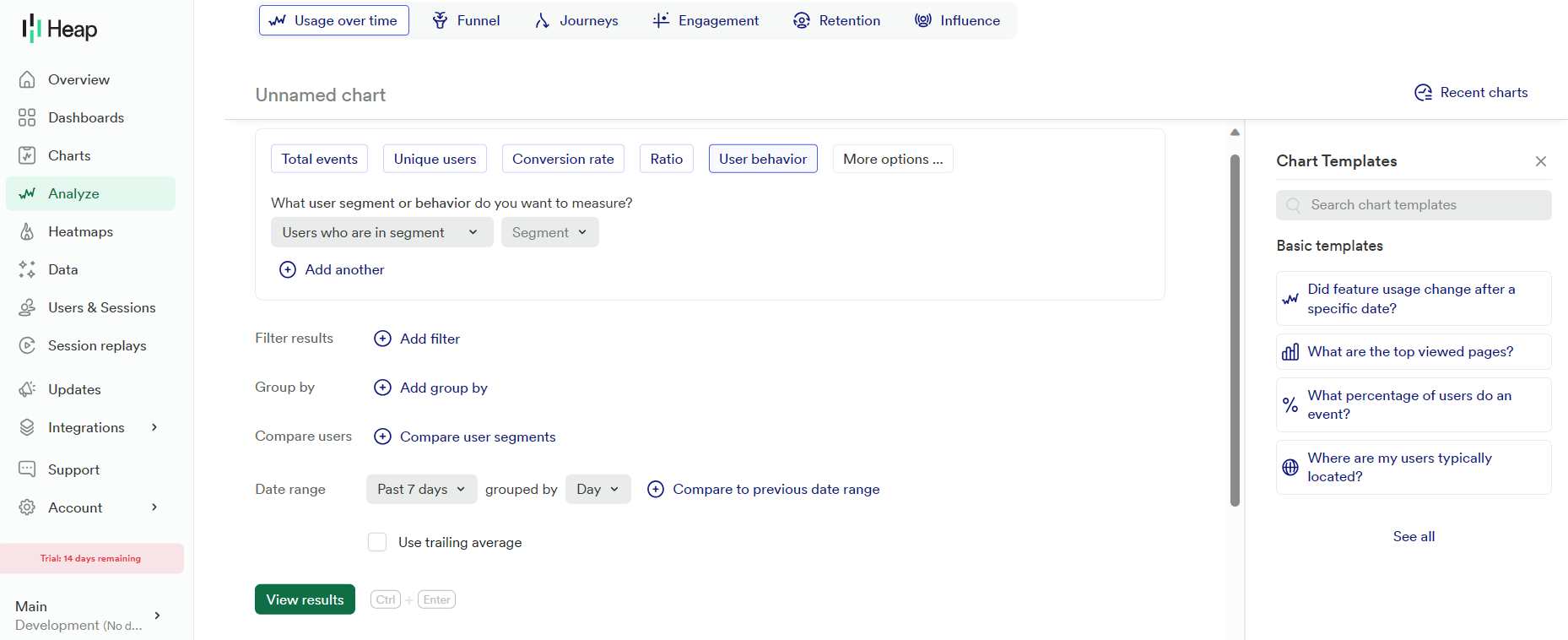
- Other product analytics features that come in handy include Journey Maps, Funnel analysis, Retention analysis, and Heatmaps.
Product analytics software #3 – Amplitude
As a digital analytics platform, Amplitude is designed to provide you with a plethora of useful product-related insights. Whether you want to assess feature adoption or track conversions, Amplitude’s powerful analytics eliminate guesswork from the process. You can share these real-time analytics among different teams to facilitate collaboration.
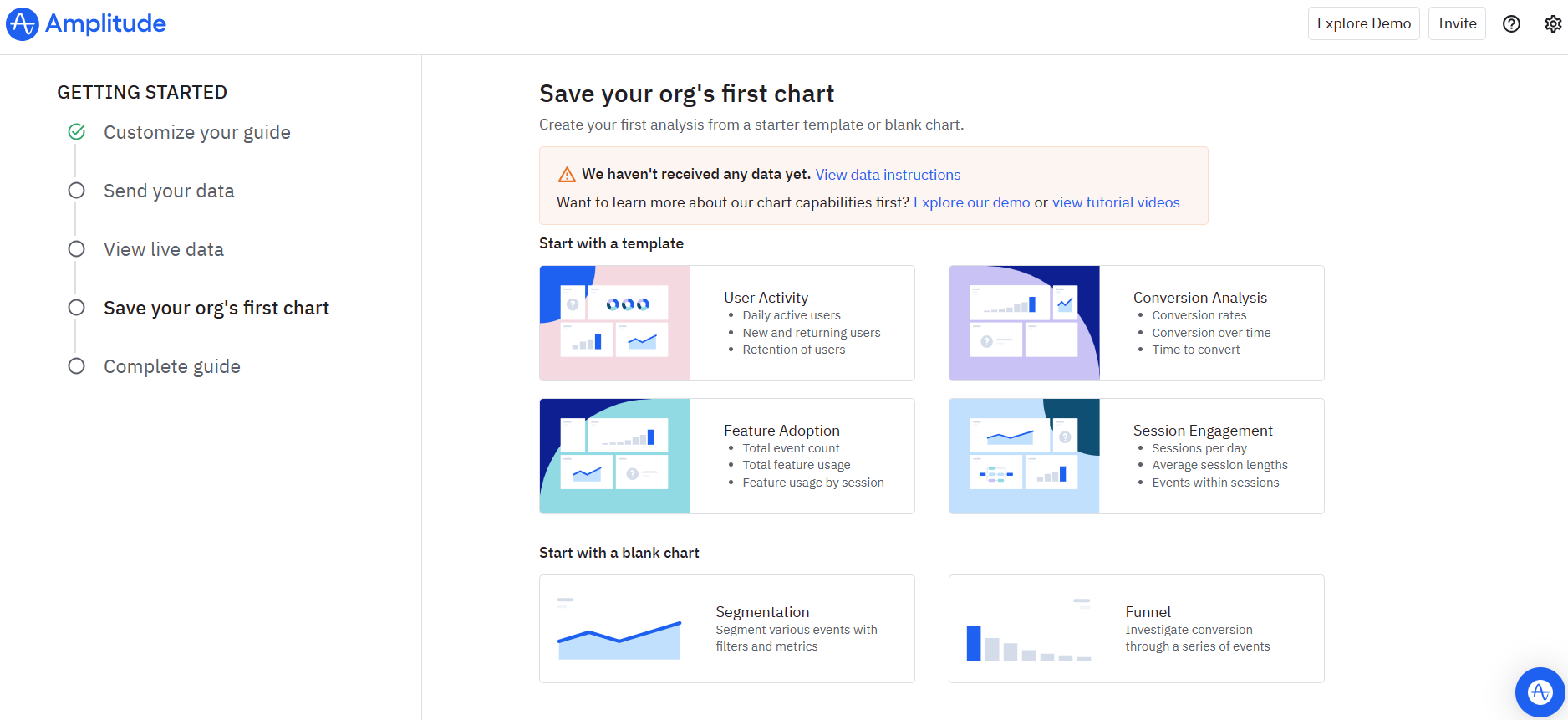
The features that facilitate seamless access to product analytics include:
- Automated report generation (with actionable insights)
- Instant visualizations (to map user journeys and understand product usage)
- Event recommendation (so you know what events and metrics to track)
Product analytics software #4 – Mixpanel
Mixpanel is another strong contender in the list of best product analytics tools. Here are a few of its top features:
- User segmentation: User segmentation is the bedrock of effective product analytics in Mixpanel. You can divide your user base into distinct groups based on attributes, behaviors, or properties and uncover meaningful trends and preferences among various user groups.
- Funnel analysis: Mixpanel’s funnel analysis feature allows you to create sequences of events that users should ideally complete. This helps you gain insights into where users drop off and where they progress.
- Retention analysis: With the retention analysis feature, you are able to track how often users return to your application after their initial interaction.
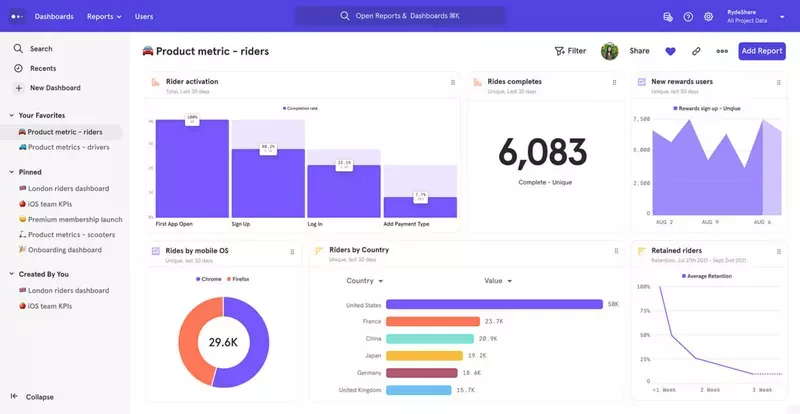
Mixpanel offers a free plan with very advanced product analytics functionality but no engagement layer or feedback features like that of Userpilot.
Product analytics software #5 – Google Analytics
Google Analytics isn’t just for web and user analytics; it’s also for product analytics. Businesses use Google Analytics to analyze user actions, website traffic, and product achievements.
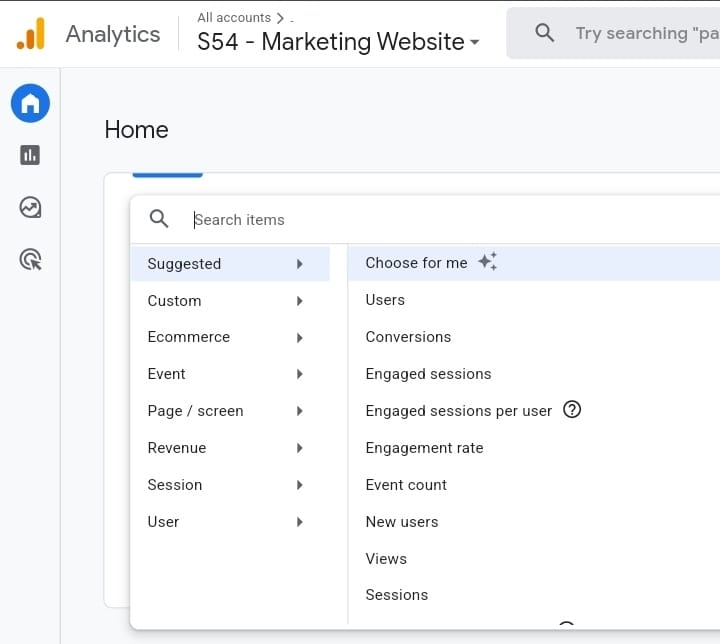
Here are some ways companies use Google Analytics for product analytics:
- Product data import: The product data import feature is excellent for tracking user behavior and conversions. Users can import data into Google Analytics. This simplifies and reduces the amount of data you need to send by importing product data.
- Product Performance Report: With the performance report, e-commerce brands can review their data for consistent patterns.
However, if you are a SaaS company and want to monitor how your product is performing, you may want to consider another product analytics software that allows you to collect user behavior data, filter it, display it in customized formats, and analyze it.
Product analytics software #6 – FullStory
Quantitative data like clicks, scroll, usage duration helps you answer the question “what”, but it doesn’t exactly tell you “why“.
The best way of understanding why users do what they do is by witnessing it firsthand. This is where session recording makes your life a lot easier.
When it comes to session tracking platforms, FullStory is one of the best solutions out there. It tracks user interactions, lets you create funnels, and observe how users behave in each funnel.
FullStory’s combination of session recording and product analytics allows you to have unique and valuable insights and understand the reason behind specific actions of your users.
FullStory also allows you to capture page views and clicks visitors make on your site. While recreating user sessions, it incorporates user data to give you the most accurate representation possible.

A brilliant feature of FullStory is its ability to track and measure “rage clicks”. In case you are wondering what that is, it’s when a frustrated user vents their frustration on their mouse. Pretty neat, right?
Compared to standalone data analysis, a combination of quantitative and qualitative data from real users makes it easier for you to understand why things happen the way they do.
To make it even better, FullStory also comes with AI and machine learning features to help you extract insights from your data. You can also calculate and track KPIs like conversion rates and visualize data using dashboards.
Another feature that might prove handy is FullStory’s integration with Slack. You can share user sessions with your team easily while collaborating on a project.
So what’s the damage?
FullStory doesn’t disclose their pricing information publicly but offers a 14-day free trial.
Product analytics software #7 – Hotjar
Hotjar stands as a robust analytics solution empowering product managers and UI designers by facilitating the tracking of user behaviors within your application.
Its top functionality includes session recordings and heatmaps, allowing comprehensive monitoring of user interactions. In addition to these core features, Hotjar also provides survey capabilities.

Some advantages of using Hotjar as your preferred product analytics platform are:
- Heatmaps displaying user activities and behaviors on the website.
- Detailed heatmaps analysis through Hotjar’s feature.
- Comprehensive user session playbacks for in-depth journey analysis.
- Intuitive and user-friendly UI for easy navigation.
However, Hotjar has some drawbacks:
- Limited customization options for dashboards.
- Constraints in survey customization, preventing a more native appearance and experience.
- Limited integration options, such as the absence of integrations with platforms like Jira or GitHub.
Choosing the right product analytics tool for you
Product analytics help you understand how users are engaging with your product and it gives SaaS product teams the ability to track user footprints at every step of the user journey.
Incorporating insights from product analytics helps you gauge how much value users are gaining from your product. Ultimately providing the opportunity to identify improvements that enhance their experience even more. Did you find the kind of tool you may be looking for today?
If you’re looking for a product analytics software with advanced features and great value for money, then give Userpilot a go. Book a demo to see it in action!






